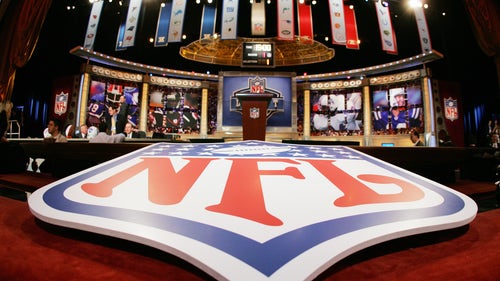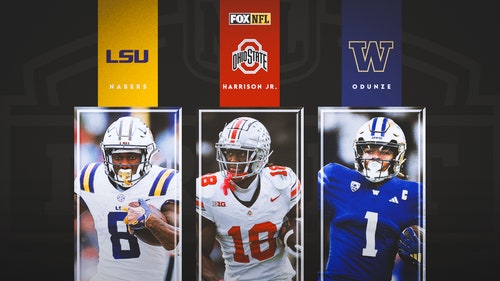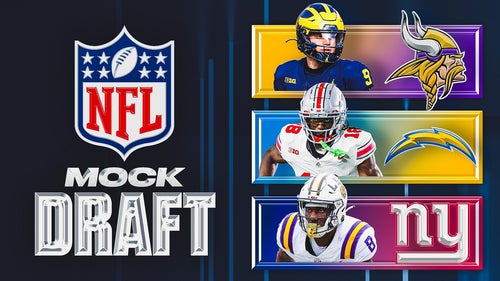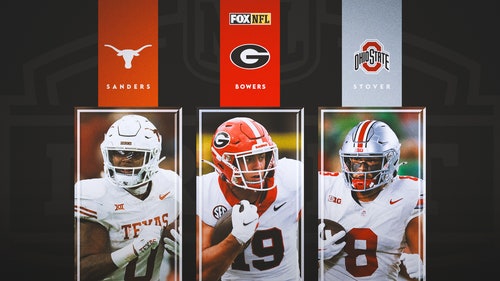
Houston Texans: Appreciating Lamar Miller's Season
The Houston Texans and, even though some viewed him as a disappointment in fantasy football, Lamar Miller was one of the team’s most important players.
Few people would call the Houston Texans 2016 season a year to remember, but the Texans didn’t have it as easy as some would think. Although the AFC South remained the NFL’s weakest division, despite some offseason hype surrounding the ultimately futile Jacksonville Jaguars, the Texans had a much more serious challenger in 2016 in the form of a surprisingly solid Tennessee Titans team.
The Texans actually failed to beat the Titans in Week 17, but they squeaked into the postseason with a 9-7 record. Derek Carr‘s injury helped the Texans score an easy win over rookie quarterback Connor Cook and the Oakland Raiders, but they had little chance at defeating the New England Patriots in the Divisional Round.
Houston’s season should be considered a success, because they had to overcome obstacles to get to the postseason and win a game. For starters, the quarterback situation was just as lousy in 2016 as it was in 2015. Brock Osweiler looks like a monumental free agent bust, and it’s hard to argue against the notion that his contract is the worst in the league.
Secondly, the Texans had to win games without defensive end J.J. Watt, who is the greatest defensive player in the history of this game. Some may say this is hyperbole, but the gaudy numbers speak for themselves.
More from NFL Spin Zone
Despite Watt’s injury, the Texans defense finished the season first in yards allowed and fourth in net yards per pass attempt. As for the offense, it was 28th in points per game and 30th in net yards per pass attempt, as Osweiler’s poor play proved to be too much to overcome. Even DeAndre Hopkins struggled in the midst of Osweiler’s incompetence, failing to reach 1,000 receiving yards on 151 targets (6.32 yards per target).
There was a lot to dislike about the Texans offense, but running back Lamar Miller was the brightest spot. He didn’t have the kind of season Le’Veon Bell, David Johnson, Ezekiel Elliott, or even LeGarrette Blount did. But Miller was one of the league’s better backs in his first season in Houston.
Miller had to make things work in an offense that could not move the ball through the air, and the Texans offensive line was ranked 24th in the league in run blocking, per Pro Football Focus. That’s the situation Miller found himself in, but he still managed to grind out 1,073 yards on 268 carries. An average of 4.0 yards per carry hardly seems inspiring, but how could he average more yards per carry in an offense that was 29th in passing?
Furthermore, Miller had to play through multiple injuries this season. He suffered shoulder, ankle, and rib injuries, missing two games. After his shoulder injury in Week 7, it seemed like there was a big injury update relating to Miller every week.
Dec 18, 2016; Houston, TX, USA; Houston Texans running back Lamar Miller (26) runs with the ball during the first half against the Jacksonville Jaguars at NRG Stadium. Mandatory Credit: Kevin Jairaj-USA TODAY Sports
Even though he wasn’t 100 percent healthy for most of the season, Miller was the Texans workhorse. With Osweiler throwing interceptions on 3.1 percent of his passes and posting a 72.2 QB Rating, Miller had to be the Texans main source of offense.
The former Miami Dolphins starter’s 268 carries were sixth in the league. Coming into the season, many wondered if Miller would be able to be a feature back in this league, because the Dolphins almost never gave him 20 carries in a game, despite his high yards per carry averages.
Although some might say that Miller’s 4.0 yards per carry and nagging injuries are proof that he cannot be a feature back, I’d argue that the opposite is the case. While it would behoove Miller, particularly in the efficiency department, to have a better handcuff in Houston, his ability to put his head down and move the chains in a bad offense was admirable.
What’s more, Miller’s 76.6 rushing yards per game ranked him ninth in the NFL last season. The names before him on the list (DeMarco Murray, David Johnson, and Melvin Gordon) are regarded as elite backs who had standout seasons, so it is interesting to see how little Miller has been praised.
Another positive aspect of Miller’s game is his consistency, which was especially important to the Texans offense. As the team’s bellcow back, Miller did a good job of avoiding negative plays. According to Sporting Charts, Frank Gore, Le’Veon Bell, Spencer Ware, Mark Ingram, and Ezekiel Elliott were stuffed on a lower percentage of their rushes among backs with at least 200 carries.
It’s too bad he only had five rushing touchdowns, since he was seemingly always stopped near the goal line on long runs.
In the 2016 season, 12 running backs had 1,000 rushing yards, and Jay Ajayi was the only other back besides Miller to hit 1,000 yards of rushing on an offense that was in the bottom ten in the NFL in total yards.
Hopefully, the Texans offense will be much better in 2017 with a different quarterback, even if it has to be former college journeyman Tom Savage. DeAndre Hopkins and Will Fuller were impacted the most by Osweiler’s league-worst 5.8 yards per pass attempt, but don’t underestimate just how much Miller’s numbers sagged as a result of his quarterback (and offensive line) situation.
He put everything on the line this season, doing his best to fight through injuries to produce high workloads in the first year of a four-year, $26 million contract.














































































































































